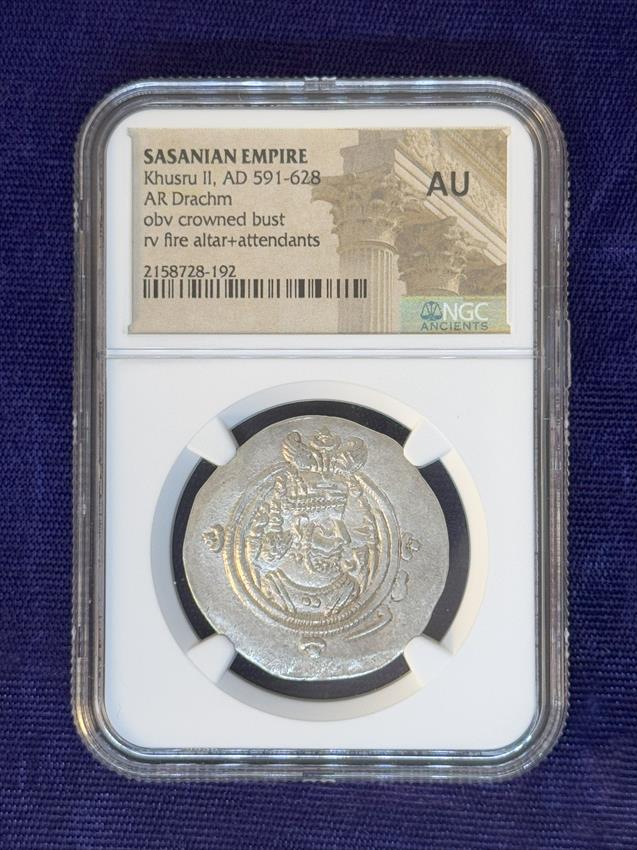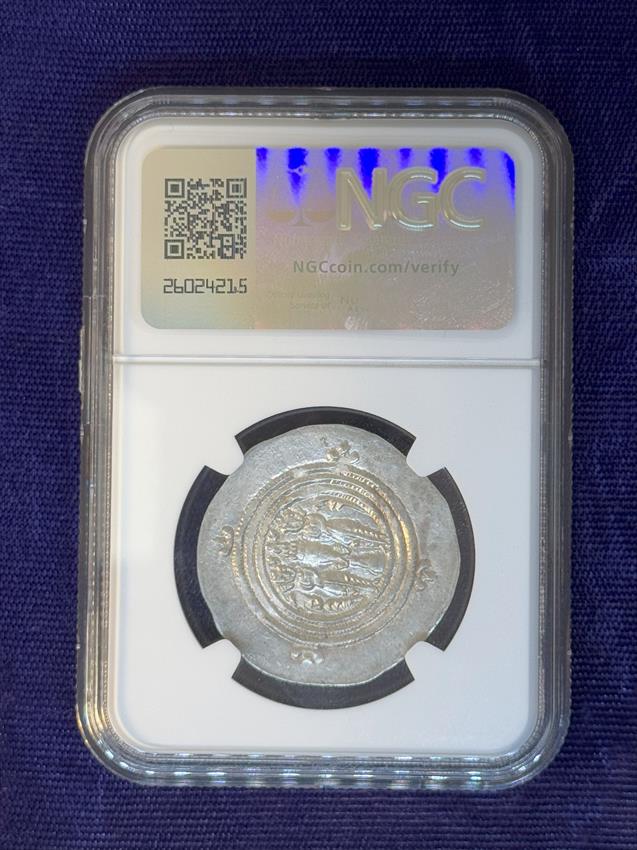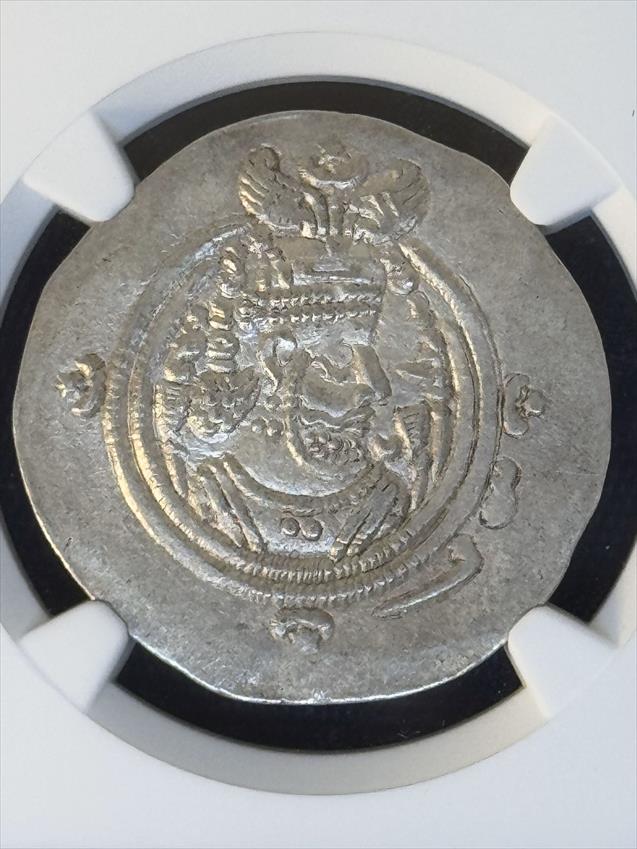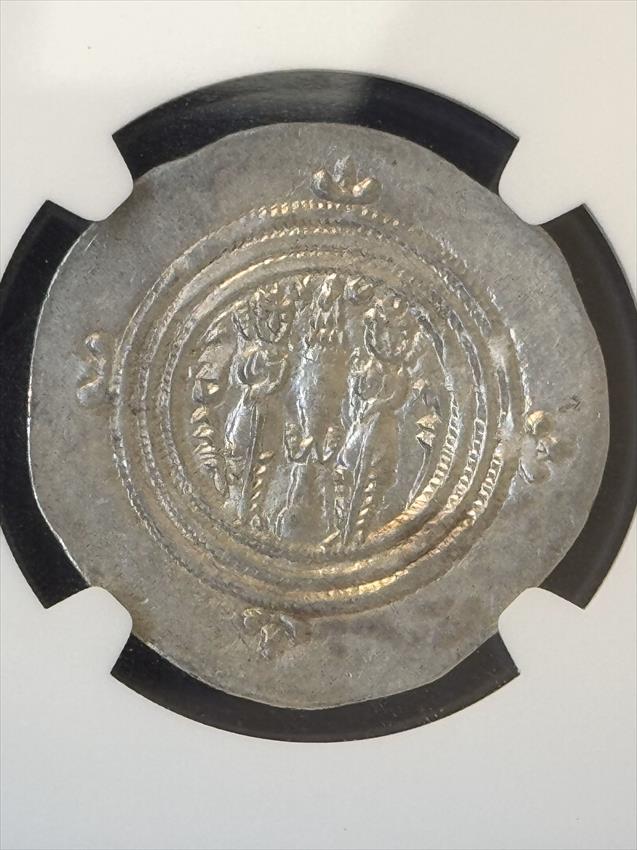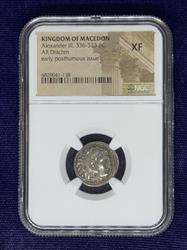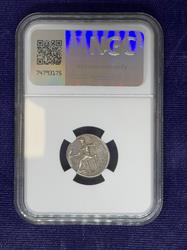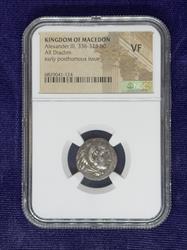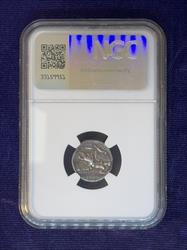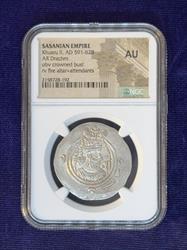
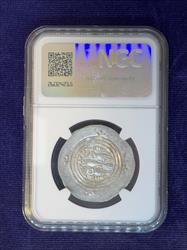
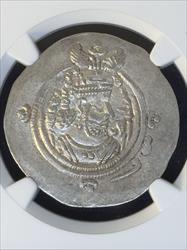
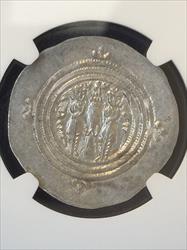
Sasanian Empire Khusru II AR Drachm AD 591-628 AU
$125.00
$129.06
Check/Wire
Credit Card
| Quantity | Check/Wire | Credit Card |
|---|---|---|
| 1+ | 125.00 | 129.06 |
- SKU: BFB005763
- Categories: ANCIENTS OTHER ALL
The Sasanian drachm was a silver coin issued by the Sasanian Empire from the 3rd to the 7th centuries CE. Its obverse typically featured a portrait of the reigning shah, distinguished by elaborate crowns and regalia, while the reverse showed a Zoroastrian fire altar flanked by attendants. Light in weight but struck in high numbers, the drachm was the empire’s principal coin and circulated widely across the Near East and Central Asia.
The Sasanian Empire, also known as Ērānšahr (translation: Empire of the Iranians), was the last empire of ancient Iran. The House of Sasan rose to power at the fall of the Parthian Empire in 224 AD. Over the next four centuries, the Sasanian Empire competed with the neighboring Roman and Byzantine empires for territory and influence, often successfully. A key victory against Rome occurred in 253 AD when Sasanid King Shapur I captured Roman Emperor Valerian. At its territorial zenith, the Sasanian Empire covered modern-day Iran and Iraq, Caucasus, the Levant, parts of Central and South Asia, and parts of the Arabian peninsula. The empire began to decline in 622 AD. After a tumultuous period of heavy taxation, many kings’ short reigns, and Arab invasions, the empire fell to Muslim conquest in 651 AD. This marked the beginning of the Islamization of Persia. Many aspects of Sasanian art, literature, music, etc. gradually became part of Islamic culture, and as Muslim influence grew, these bits of Sasanian culture spread through the Muslim world.
This coin was graded AU (Almost Uncirculated) by the Numismatic Grading Company, the official grading service of the American Numismatic Association and the Professional Numismatists Guild. Here is a list of grades used by the NGC, as well as information about Strike, Surface, and Style ratings.
Obverse: Bust of Khusru II left, wearing a winged crown with a crescent and star. Double border with crescents and stars at the top, bottom, left, and right.
Reverse: Zoroastrian fire altar flanked by two attendants wearing headdresses. Above the fire, a star to the left and a crescent to the right. Triple border with crescents and stars at the top, bottom, left, and right.
Reference: Göbl Sasan II/3, Val Sn 50
The Sasanian Empire, also known as Ērānšahr (translation: Empire of the Iranians), was the last empire of ancient Iran. The House of Sasan rose to power at the fall of the Parthian Empire in 224 AD. Over the next four centuries, the Sasanian Empire competed with the neighboring Roman and Byzantine empires for territory and influence, often successfully. A key victory against Rome occurred in 253 AD when Sasanid King Shapur I captured Roman Emperor Valerian. At its territorial zenith, the Sasanian Empire covered modern-day Iran and Iraq, Caucasus, the Levant, parts of Central and South Asia, and parts of the Arabian peninsula. The empire began to decline in 622 AD. After a tumultuous period of heavy taxation, many kings’ short reigns, and Arab invasions, the empire fell to Muslim conquest in 651 AD. This marked the beginning of the Islamization of Persia. Many aspects of Sasanian art, literature, music, etc. gradually became part of Islamic culture, and as Muslim influence grew, these bits of Sasanian culture spread through the Muslim world.
This coin was graded AU (Almost Uncirculated) by the Numismatic Grading Company, the official grading service of the American Numismatic Association and the Professional Numismatists Guild. Here is a list of grades used by the NGC, as well as information about Strike, Surface, and Style ratings.
Obverse: Bust of Khusru II left, wearing a winged crown with a crescent and star. Double border with crescents and stars at the top, bottom, left, and right.
Reverse: Zoroastrian fire altar flanked by two attendants wearing headdresses. Above the fire, a star to the left and a crescent to the right. Triple border with crescents and stars at the top, bottom, left, and right.
Reference: Göbl Sasan II/3, Val Sn 50

